 |
Disaster
management and cultural heritage:
|
 |
Disaster
management and cultural heritage:
|
Disaster management and cultural heritage:
An investigation of knowledge and perceptions of
New South Wales Rural Fire Service Brigade Captains
Kristy GrahamSchool of Environmental and Information Sciences, |
Dirk HR SpennemannSchool of Environmental Sciences and Institute of Land,
Water and Society, |
Abstract
The protection of life and property will always be the priority in any disaster situation. At the same time other considerations often fall by the way side and short-term decisions are made that have irreparable implications on environmental and cultural heritage issues. Anecdotal information and pilot studies suggested that there are a number of barriers that limit disaster planning for cultural heritage resources. In an attempt to provide empirical evidence of these barriers a postal survey was distributed to Rural Fire Service Brigade Captains throughout New South Wales (Australia). The results highlight limited understanding of cultural heritage issues, limited exposure to dealing with such resources in disaster situations and limited communication between heritage and disaster management agencies.
Disaster management and cultural heritage:
An investigation of knowledge and perceptions of
New South Wales Rural Fire Service Brigade Captains
The multi-disciplinary nature of natural disasters is recognised as not only a study of science but also as a field of social science (Blong 1997; Bogard 1994; Chapman 1999; Dolan 1995; Kates 1994; Quarantelli 1994; Waugh 2000; White 1994). Cultural heritage forms part of our social environment and it is inherently linked to our identity (Australian Heritage Commission 1999; Davison and McConville 1991; Marquis-Kyle and Walker 1996; Latreille et al 1982; Pearson and Sullivan 1995). While the preservation of life and property will always be the priority in any disaster situation, other 'assets', such as the preservation of cultural heritage places has also become significant elements in disaster management (Spennemann 1996). Studies have found that the preservation of heritage items can assist communities in the recovery from these events (Carment 1996; Ellsmore 1992; Henry 1991; Hollow and Spennemann 2001; MacIntyre 2000; Nelson 1991; Read 1996; Strong 2000; Wells 1993).
Attempts at investigating disaster management and the impacts on cultural heritage sites has largely focused on the physical impacts and their mitigation (cf. Allen et al 1991; Bear 1991; Bonneville et al 1991; Cox 1992; Croci 2000, 2001; Donaldson 1998; Spennemann and Macar 1999). The concern for proactive disaster planning for cultural heritage resources has received international attention, and a result some very effective and generic guidelines have been developed (James 1993; Nelson 1991; Tweedy 2000; Roy 2001; Stovel 1998). Some of these have been developed to provide some site specific examples (Eck 2000; Estes 2000; Croci 2000; McLane and Wust 2000).
Yet, when it comes to an actual disaster event, many of these principle are not applied, guidelines not followed with the heritage places suffering as a result. A systematic review suggests that a number of barriers, both and administrative and perceptional, exist for disaster planning for cultural heritage. To date this is largely based on anecdotal evidence. Understanding these barriers, however, is essential in developing effective disaster planing for cultural heritage resources.
In 2001 a postal survey was conducted to investigate the knowledge and perceptions of the interface between cultural heritage and disaster management. This research was designed to provide empirical evidence of the current range of attitudinal barriers towards disaster planning for cultural heritage. This gap in understanding has well been acknowledged in the literature (Spennemann 1996; 1998a; 1999a; 1999b; Spennemann and Look 1998b; Stovel 1998), however this is the first attempt to quantify the extent of these issues. This has enabled a cross sectional view of the current range of attitudes to be compiled. The focus of this study will be on the responses of Brigade Captains from the Rural Fire Service in Australia. Other samples assessed in the study were the Local Controllers of the State Emergency Service (Graham & Spennemann 2006a) and heritage managers employed by the local governments (Graham & Spennemann 2006b). Although the results of the study are specific to Australia, the findings are relevant to most industrialised nations.
Cultural heritage and natural disasters
The impacts of natural disasters are usually severe and immediate
and often irreparable. Cultural heritage places and items are particularly vulnerable
to the effects of natural disasters as they are finite, scarce, valuable and
non-renewable (Spennemann 1998c). Much has been written on the conservation
of heritage items and its protection from slow acting decay agents such as raising
damp, white ants and structural destruction. Only recently have we seen this
same development in literature regarding the management of the impacts of natural
disasters for cultural heritage. Prior to this the focus tended to be on the
management of institutionalised resources in disaster situations, such as museum
collection, archives and libraries (Kidd 1998; MacIntrye 2000; National Library
of Australia 2001; Lyall 1993; Illinois State University Library n.d.).
The interest in the subject is of course exemplified after each disaster in which we see a loss of cultural heritage resources. In Australia such situations are demonstrated by disasters such as Cyclone Tracy 1974 (Carment 1996; Walker 1980, Wilkins 1980), and the Newcastle Earthquake 1989 (Henry 1991; Dean-Jones et al 1980; Wells 1993). The anecdotal information from these situations indicates that emergency managers were unaware of the specific needs of cultural heritage resources in these natural disaster situations. The same was also evident for heritage managers, with little knowledge of the impacts of natural disasters on cultural heritage resources (Spennemann 1999a, 1999b; Look and Spennemann 2000; 2001; Stovel 1998).
In the past decade volumes of information were produced about the impacts of natural disasters on cultural heritage as well on mitigation options in various disaster events such as earthquakes (Collins 1991; Langenbach 2001; Sullivan 2001; Sykora et al 1993; Wight et al 1992), floods (Baldrica 1998; Bucher 1994; McLane and Wust 2000), bushfires (Gleeson and Jones 2000; Spennemann 1999a ; Traylor et al 1990), tornadoes (Reed 2000), cyclones/typhoons/hurricanes (Bird 1992; Nelson 1991; Alderstein 1990; Frey 1980; Look 1991; Spennemann 1991; Walker 1980; Wilkins 1980), cyclonic surges (Spennemann 1998), landslides (Hardfield 2001), terrorist attacks (Osborne 1998; 2000) and salinity (Spennemann 1997; 2001; Spennemann and Macar 1999). Even seemingly slow-acting events such as drought have the potential to expose archaeological sites which would normally be overed by water or topsoil (O’Halloran 2000; O’Halloran and Spennemann 2002; Williams 1996; Toner 2001).
Although these studies document the disastrous effects of natural disasters on cultural heritage, there is a lack of clear policy and application especially in Australia. If our cultural heritage is fortunate enough to survive the physical impact of the disaster itself, it faces another threat: will it survive the decisions made during or after the disaster (Spennemann 1999a)? Documentation of several events has demonstrated that poor disaster management and recovery have actually increased the damage to irreplaceable resources (Craigo 1998; Karitos 1998; Traylor et al 1990). The effects of ill-considered management action can be devastating. There has been an acknowledgment of the need for disaster planing for cultural heritage, and some specific planning mechanisms developed (James 1993; Nelson 1991; Stovel 1998).
While it has been acknowledged that there is a need for disaster planning, there is a lack of application within Australia. Anecdotal information and a pilot study (Spennemann 1998b) suggest that a number of attitudinal barriers exist. The following study was designed to further investigate these attitudinal barriers.
The study
To examine the knowledge and perceptions of Australian disaster managers
in towards cultural heritage in disaster situations, a self-administered postal
survey was designed and distributed in April of 2001 Local Controllers of the
State Emergency Service and the Rural Fire Service (RFS) of New South Wales.
From the emergency management sector the study drew of on the experiences of
volunteers which make up the backbone of the organisations and also provide
local liaison and frontline response. The heritage managers of New South Wales
Local Government Areas were given a self-administered postal survey to assess
their under standing of natural disasters and how they would protect cultural
heritage in disaster situations.
This paper will report on the knowledge and perceptions held by the RFS Brigade Captains, by far the largest group of disaster managers throughout the state. The findings relating to the other two sample populations are discussed elsewhere (Graham & Spennemann in press a; in press b).
To investigate the knowledge and perceptions towards disaster planning for cultural heritage, a self-administered postal survey was developed. The frame of reference for the development of the survey was the Total Design Method (Dillman 1978). Which was developed on the principles of social exchange theory, ie that an individual’s desire to complete an action is directly related to their analysis of the costs and benefits of doing so (Dillman 1978). This technique of developing and implementing postal surveys has been used very successfully and is a respected method in social research (Axford, Carter and Grunwald 1997; Dillmann 1991). A pre-test of the survey and initial comments strongly influenced the survey design. The survey length was kept to four pages (two sides printed front and back). Two styles of questioning writing were used in the survey. The Likert scale is an effective means of measuring attitudes (Mueller 1986; Neuman 2001; Babbie 2001). This involves structuring the questions on a scale which ranges from a positive to negative response, with a neutral middle value. The second style used was close-ended questions. This style simply involved the respondent ticking the appropriate box, which reflected their opinion.
Each participant received two separate mailings. The first consisted of a package containing a cover letter outlining the aims of the project and the value of their participation and a copy of the survey. Two weeks after the initial mail out Brigade Captains received a postcard. This postcard thanked those participants who had returned their survey and requested that those who had not done so, if they could please do so.
As with any methodology there are inherent weaknesses or limitations. Attitudes and values relating to cultural heritage values are two very intangible items, which are even more difficult to measure. It is acknowledged that the reliance on closed ended questions may not have facilitated the respondents the opportunity to freely express their views. To assist with this limitation respondents were encouraged to add qualitative comments in the spare space on the survey.
Accessing the sample
Fire Control Officers provided a list of Brigade Captains for their
area. This allowed personalising the surveys. In some instances mailing information
was provided to the researcher and compiled for the distribution of the survey.
Other Fire Control Officers preferred to distribute the survey on the researchers
behalf. Time provided by these Fire Control Officers was greatly appreciated,
which meant that in cases where they distribute the surveys the cover letters
could not be personalised.
Response rate
The overall response rate for the Rural Fire Service (RFS) was 44%.
Although every effort was made to ensure correct mailing information was obtained,
nine packages were returned due to incorrect addresses or the individual no
longer resided at that address. Two individuals declined to participate. One
as he had only been recently appointed Brigade Captain and did not feel he
possessed the necessary experience to participate. Another declined as he
was conducting his own research. Personalisation had a positive effect on
the response rate, with 54.9% of responses (n=730) compared to 38.5% who received
the survey through their Fire Control Officer (n=667).
Who are the RFS Brigade Captains?
As the RFS is predominantly a voluntary organisation it
is instructive looking at the occupations of the Brigade Captains. The sample
is very diverse, with almost half of the respondents being primary producers
(48.4%). Other occupations, which were strongly represented in the sample
were retires (22%) and tradesmen (12.6%)(n=512).
Respondents were asked to identify if they were a member of the State Emergency Service or one of the Heritage organisations (table 1). Almost one in five were also member of the State Emergency Service (18.1%) but only a very small number of participants indicated active involvement in historical or heritage organisations through membership to a Historical Society (2.1%) or the National Trust (0.9%).
Knowledge of natural disasters in their shire
As can be expected RFS Brigade Captains nominated fire related disasters
as having occurred or likely to occur in their region (Figure 1). Respondents
also nominated climatic events such as severe storms (87.2%), drought (81.0%),
and flooding (46.6%). Clearly, these responses are strongly coloured by
the personal experience of the respondents and the nature of events that
were called out to assist. Confirming this, by comparison, salinity was
identified by only 21.8% of respondents.
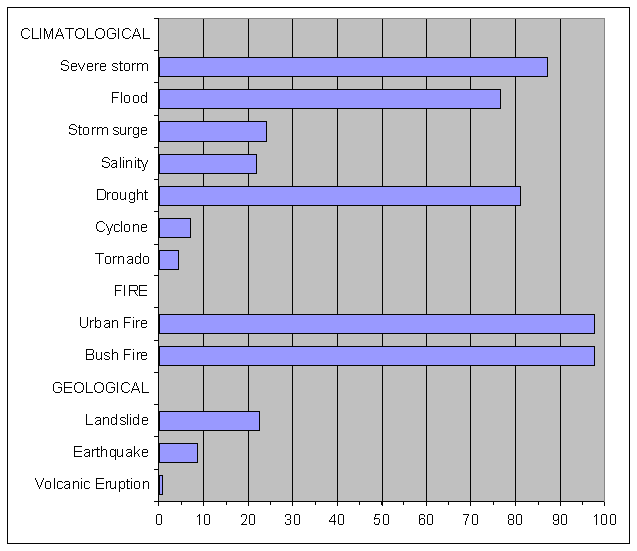
Figure 1: Natural disasters which RFS Brigade
Captains (in %) nominated as
having occurred or were likely to occur within their shire.
What constitutes cultural heritage?
RFS Brigade Captains were presented with a list of heritage items
and were asked to indicate which of them they regarded as heritage places
(table 1). The second part of the table contains those additional items
which respondents could nominate themselves. These have been grouped to
reflect thematic elements within the data. European orientated heritage
received the highest degree of recognition with historic houses (92.5%)
followed by cemeteries (82.9%). Industrial heritage was poorly recognised
(15.4%), as were power stations with 8.5%. Amongst the sites relating to
Indigenous culture, RFS Brigade Captains recognised Aboriginal art sites
(70.6%) ahead of Aboriginal occupation sites (55.2%). The conceptual framework
represented in the answers shows a high recognition of popular perceptions
of heritage (European buildings, cemeteries, Aboriginal art sites) while
ethnic minority sites (eg Chinese market gardens) and industrial infrastructure
sites are outside the familiarity envelope.
Table 1: Level of recognition for listed and nominated cultural heritage resources by RFS Brigade Captains
Listed on survey |
n | % |
|---|---|---|
| Historic houses | 491
|
92.5
|
| Historic gardens | 356
|
67.1
|
| Cemeteries | 440
|
82.9
|
| Botanic gardens | 212
|
39.9
|
| Streetscapes | 293
|
55.2
|
| Aboriginal occupation sites | 263
|
49.5
|
| Aboriginal art sites | 375
|
70.6
|
| Chinese market gardens | 59
|
11.1
|
| Shipwrecks | 179
|
33.7
|
| Industrial sites | 82
|
15.4
|
| Power stations | 45
|
8.5
|
| Other |
n | % |
| Depends on selection criteria/recognition framework | 1
|
0.2
|
| Rural landscapes/resources and farming practices | 10
|
1.9
|
| Infrastructure | 22
|
4.1
|
| Artefacts/ruins | 1
|
0.2
|
| Natural features/gardens | 20
|
3.8
|
| Minority heritage | 0
|
0
|
| Art/monuments/documents | 7
|
1.3
|
| Intangible heritage/associations/festivals | 7
|
1.3
|
| Industrial/ land uses | 5
|
0.94
|
| Moveable | 7
|
1.34
|
| Ticked other but did not state | 1
|
0.2
|
Awareness of formal frameworks for cultural heritage
Government responsibility is distributed across three levels in
Australia, heritage places are reflected across all three levels of management.
The Commonwealth government deals with items of national significance. State
government agencies are concerned with heritage protection at the state
and local level through legislative frameworks implemented by various agencies
(in NSW the NSW Heritage Office, the Department of Planning, and National
Parks and Wildlife Service. The third consists of local government, where
heritage of state and local significance is managed through local planning
controls. In addition, there is the National Trust, a non-government agency
that recognises and lists places of heritage significance. It has no legal
power in the protection of places, but projects influence through its reputation.
RFS Brigade Captains were asked whether they were aware of the formal heritage recognition frameworks and whether they could quantify the number of places thus protected. The study showed that only a small percentage of the population were familiar with the formal frameworks for developed cultural heritage. The results indicate that 21.6% of RFS captains were unaware of the Local Environment Plan (LEP) which is used at the local level. State heritage frameworks were also poorly recognised with 22.2% of respondents indicating they had no idea of the number of sites listed for their local area, with 56.4% of respondents choosing not to answer the question. Similar results were also evident for the Register of the National Estate and the National Trust. Of the respondents 15.2% indicated that they were unaware of the number of sites listed under the Register of the National Estate and 64.0% did not respond to this question. Responses to the National Trust were similar, with 21.8% indicating that they did not know and 58.1% not responding.
This low recognition of formal frameworks for cultural heritage protection shows that the Brigade Captains were neither grained in the matter, nor were they closely involved in the protection of heritage places from natural disaster. Joint disaster response planning would have familiarised them with such concepts.
Table 2: Awareness of RFS Brigade Captains of heritage frameworks
| Heritage framework | n | % | |
|---|---|---|---|
| Did not know | Local Environmental Plan | 115
|
21.6
|
| State Heritage List | 118
|
22.2
|
|
| Register of the National Estate | 81
|
15.2
|
|
| National Trust | 116
|
21.8
|
|
| Able to list the number of sites | Local Environmental Plan | 110
|
20.7
|
| State Heritage List | 113
|
21.3
|
|
| Register of the National Estate | 110
|
20.7
|
|
| National Trust | 107
|
20.2
|
|
| Non Response | Local Environmental Plan | 306
|
56.4
|
| State Heritage List | 300
|
56.4
|
|
| Register of the National Estate | 340
|
64.0
|
|
| National Trust | 309
|
58.1
|
Perceptions of managerial and disaster threats to cultural heritage
The responses were scored from 1 (strongly disagree) to 5 (strongly
agree) and mean scores as well as standard deviations were calculated. Common
to all responses were fairly uniform standard deviations of the magnitude
of approximately one full rank (with the notable exception of earthquakes).
RFS Brigade Captains were generally more aware of the threats which natural diasters pose to cultural heritage then the listed managerial issues (Figure 2). Those issues which respondents did not feel were of concern were decay (mean response 2.63), and recreation (mean 2.25). As would be expected RFS respondents identified bushfires as the most prominent natural disaster to pose a threat to cultural heritage resources (mean 4.35). Also acknowledged was the threat which severe storms pose to cultural resources with a mean response of 3.77. The threat that an earthquake could pose demonstrated a low level of concerned with a mean response of 1.84, possible due to the fact that such events are seemingly few and far between.
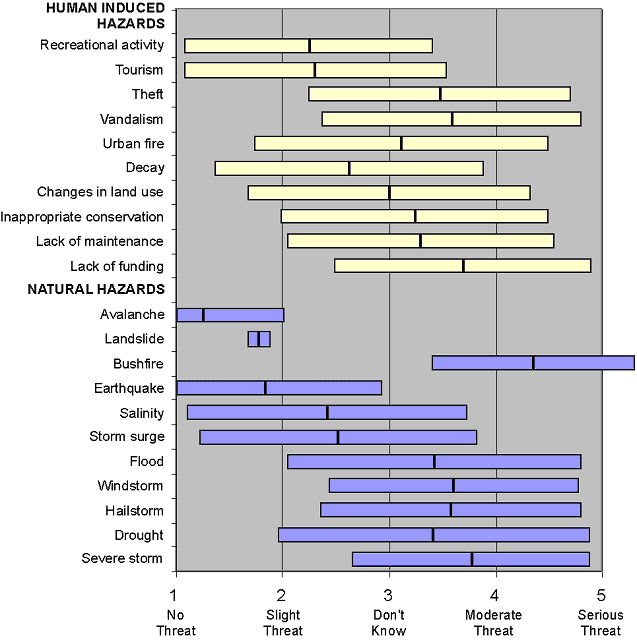
Figure 2: RFS Brigade Captains perceptions
of managerial and natural disaster related threats to
cultural heritage (“In your opinion, to what extent do you see
the following issues
as a threat to cultural heritage within your shire?”)
Perceived levels of concern of various stakeholder groups
RFS Brigade Captains regarded all the listed stakeholders as concerned
for disaster management involving cultural heritage (Figure 3). Those specialising
in heritage matters were perceived to be the most concerned with historical
societies ranking first (mean 4.44), followed by local (mean 4.27) and state
heritage planners (mean 4.06). Brigade Captains perceived their own organisation
(RFS) to be concerned with disaster planning for cultural heritage resources
with a mean response of 4.07, which was slightly higher than that for the
SES (mean 3.94). Those in local government, on the other hand, were perceived
to have low levels of concern for the issue: Elected council representatives
scored a mean of 3.78, local council representatives only 3.73. The community
as a whole was perceived to have the lowest level of concern (3.52).
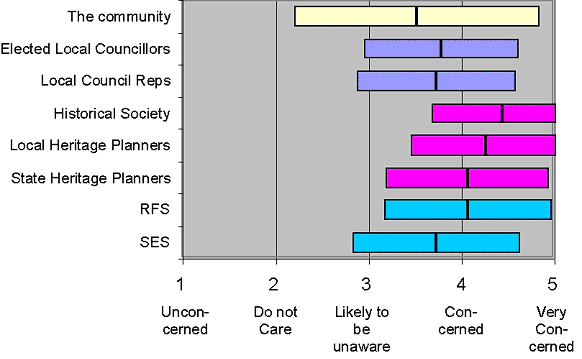
Figure 3: Perceived levels of concern of
various stakeholder groups
(“In your opinion, what do you believe are the attitudes of
the following groups in your shire
to the potential threats to cultural heritage as a result of a natural disaster?”)
Experiences and training
Overall, RFS Brigade Captains felt that the protection of cultural
heritage resources was important (mean 4.11). Yet only few members had been
involved in natural disaster situations involving cultural heritage (mean
2.84), few had met the heritage officer for their shire and even fewer had
been involved in training for such an event (mean 2.06). Respondents indicated
a lack of knowledge of cultural heritage resources within their shire (mean
3.23) (Figure 4).
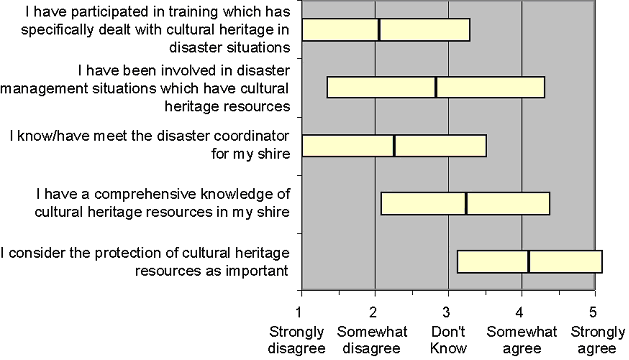
Figure 4: Experiences and training involving
cultural heritage in natural disaster situations
(“Please respond to the following assertions in regards to your knowledge
of cultural heritage within your shire”)
Disaster planning for cultural heritage
RFS respondents indicated that disaster management plans should
be prepared for all cultural assets (mean 3.82), and not just for key heritage
assets (mean 3.15). The large standard deviation (1.37), however, highlights
a large degree of variation in perceptions. Brigade Captains also indicated
strong support (mean 3.99) for the development of strategic plans to address
specific approaches to heritage sites in natural disaster situations (Figure
5).
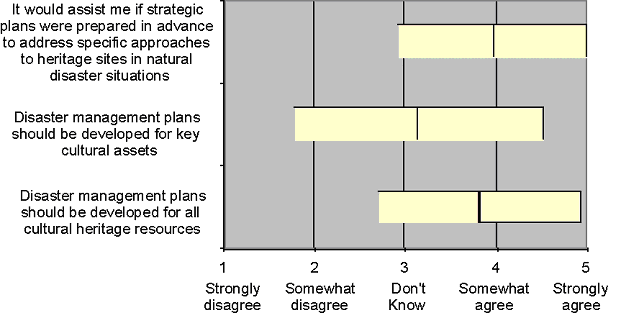
Figure 5: Responses by RFS Brigade Captains to assertions regarding disaster management
A large majority of RFS Brigade Captains (62%) nominated that the development of disaster management plans for cultural heritage resources, should be a combined approach of several agencies rather than by individual elements (Figure 6).
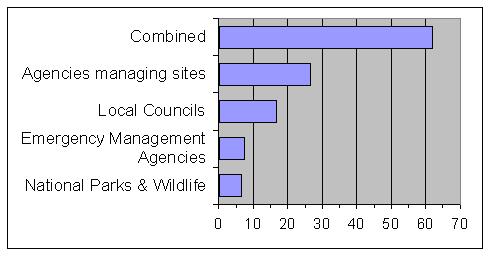
Figure 6: Agencies which RFS Brigade Captains
(in %) would like to see involved in the
development of disaster management plans for cultural heritage (multiple
responses possible).
Recovery operations for cultural heritage
Recovery operations are important phase in disaster planning for
cultural heritage. State government bodies should be involved (51.3%) with
assistance provided by Local council (29%), and the National Trust (27.5%).
Brigade Captains felt that this responsibility should not lie with property
owners (16.9%) or community groups (8.7%). There was a mixed response to
the role of other emergency management agencies in recovery operations with
23.5% of Brigade Captains indicating that these agencies should be involved
(Figure 7).
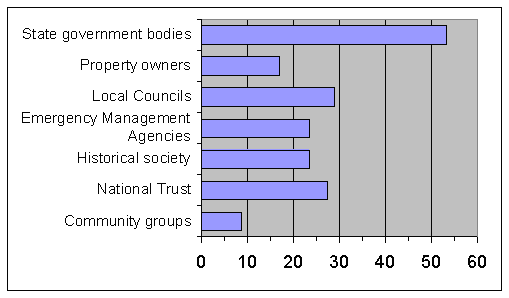
Figure 7: Agencies which RFS Brigade Captains
(in %) felt should be involved in developing
disaster management plans for cultural heritage (multiple responses possible)
Perceived impacts of natural disasters and their effect on cultural
values
Views expressed by Brigade Captains indicate that the loss of a
small number of cultural heritage places does not impact on the overall
integrity of the shire’s heritage (mean 3.74) (Figure 8). A smaller
group perceived that it is more difficult to repair cultural heritage without
the loss of significant cultural values (mean 2.91).
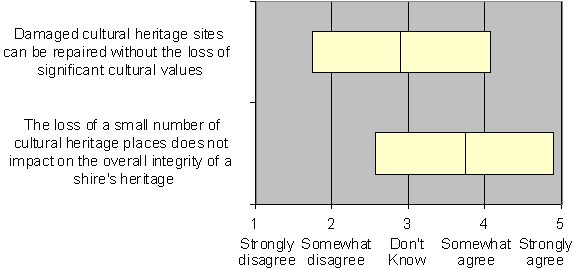
Figure 8: Responses by RFS Brigade Captains to assertions how natural disasters affect cultural values.
Communication between heritage managers and disaster
managers
While there is a perceived need for communication of emergency and
heritage managers to communicate regularly before and during a natural disaster
(mean 3.76), there is currently little actual communication between the
two (1.69 ) (Figure 9)
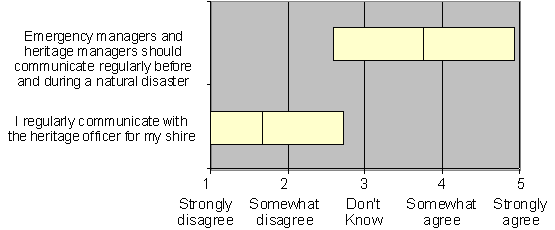
Figure 9: Responses by RFS Brigade Captains
to assertions regarding
communications between emergency and heritage manager
Funding and disaster management
When it came to an assessment of the costs to society, Brigade Captains
believed that the cost of developing and implementing disaster management
plans for cultural heritage resources did not outweigh the loss of cultural
heritage (mean 2.87) (Figure 10). They also indicated that that their organisation
was inadequately funded to deal with natural disaster involving cultural
resources (mean 2.25).
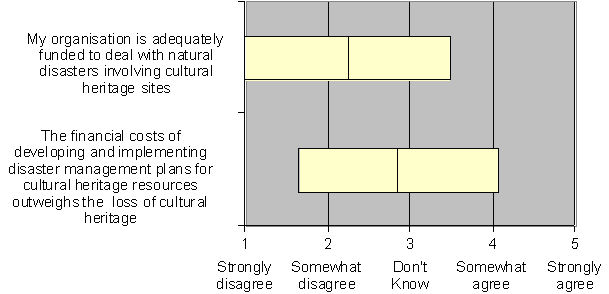
Figure 10: Responses by RFS Brigade Captains to assertions
regarding funding issues
and disaster management for cultural heritage resources
Disaster management who's responsibility?
Respondents indicated uncertainty whether the protection of cultural
heritage resources in natural disaster situations should be the responsibility
of paid professionals (mean 3.00). An equal amount of uncertainty was demonstrated
in relation to the role of volunteers (mean 3.02). Respondents were unaware
of whom to contact if recognised cultural heritage sites were damaged in
a natural disaster situation (Figure 11).
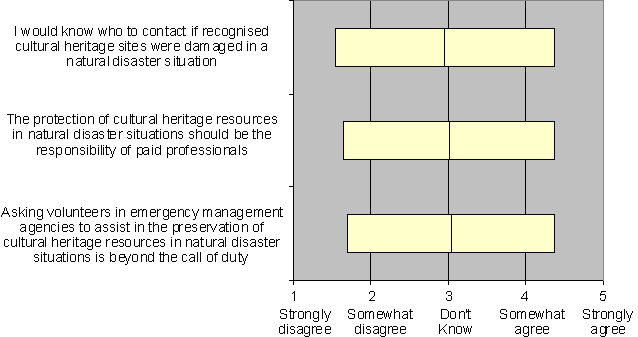
Figure 11: Responses by RFS Brigade Captains
to assertions regarding the
responsibilities and disaster management for cultural heritage sites
A number of perceptions for disaster planning for NSW Rural Fire Service Brigade Captains were identified in the study. The following discussion raises a number of key findings and their relationship to the broader paradigms of disaster planning for cultural resources.
Knowledge of cultural heritage
Although there is a general awareness of cultural heritage resources,
the study indicates that they had not been considered in the context of
a disaster situation. For example the occurrence of flooding was acknowledged
as a natural disaster which has occurred or is as likely to occur in the
respondent’s area. When asked if they considered flooding as a threat
to cultural heritage, the response indicated that they did not. The ability
to protect cultural heritage during a natural diaster situation, is reliant
on the ability to recognise it as such.
Those heritage items respondents were able to recognise as cultural heritage, reflected predominantly European values. Minority and industrial heritage received a much lower level of recognition. This indicates a need to educate the RFS Brigade captains about the diversity of cultural heritage resources. As stated by Spennemann and Look (1998b p. 183) ‘…the sensitivity of disaster managers to the specific needs of cultures other than the dominant Anglo-Saxon European Conglomerate is required.’ The subjective manner in which cultural heritage is identified contributes to the complexity of this problem. Stovel (1998) has also acknowledged a general resilience of risk preparedness professionals to incorporate heritage issues.
Policy and implementation
Each district is required to develop a Bush Fire Management Operations
Plan. This document is prepared by the Bush Fire Management Committee and
is a legal requirement under the Rural Fires Act 1997. Districts
such as the Hume Shire have included a list of cultural heritage sites in
their operations plans (NSW RFS Albury Hume District 1998), with the locations
of sites included as an appendix. This information was taken directly from
the Local Environment Plan, which is a planning tool used to recognise sites
of significance. Although this is an excellent source of information for
the RFS, it relies on the premise that the information contained within
the LEP is up to date and comprehensive.
The ability to assist emergency management agencies understand cultural heritage is reliant on the heritage system being effective. Respondents were asked to indicate the number of heritage items listed under the Local Environment Plan for their Local Government Area. Only 20.7% of respondents could do so, 21.6% of respondents indicated that they had never heard of the LEP or did not know, and 56.4% did not answer the question.
Further commitment to the protection of cultural heritage by the NSW Rural Fire Service is evident through the Environment Service Standard (NSW Rural Fire Service 2001 p. 1-2) which states:
The environmental consequences of activities undertaken by the Rural Fire Service shall be minimised having protection of air, water, land protection, protected areas and wilderness, threatened species and their habitat, Aboriginal, historic heritage and the management os pest species, erosion and the prevention of wild fire. The best way to achieve these environmental outcomes is through appropriate planning prior to the event rather then when an emergency arises.
Although this policy acknowledges the need for the consideration of cultural heritage, there is a need to extend this further to include the implementation of these objectives. Very few respondents indicated that they had attended training that dealt with the specific needs of cultural heritage in natural disaster situations. The need for such training is demonstrated by a greater number of Brigade Captains having dealt with such situations.
Due to the top down management structure of the organisation , change needs to begin at the senior level and filter down the ranks to those operating at the local level, as these are the individuals responsible for fire management in their area. The Rural Fire Service acknowledges the value of local knowledge held by their captains, however at times there is a reluctance to share information. The RFS is trying to combat their culture of possessing but not sharing information, so that it may be used for the greater good.
Benefits exist to cultural heritage as sometimes natural and cultural values are inherently linked in the physical composition of the resources, such as a cultural landscape. Some heritage professionals believe that to distinguish between cultural and natural values is artificial (Applin 2002). When people have been adversely effected by the onset of a disaster the ability to identify with ones surrounds is of importance. The ability to identify sometime thing familiar in the landscape has been reported to have positive impacts of the recovery of communities after a disaster. The relationship between a place and identity is often in the historic fabric of a place, that which is the most vulnerable (Look and Spennemann 2000).
Co-ordination
Previous experiences have indicated that natural disasters involving
cultural heritage require an enormous amount of co-ordination between agencies
(Henry 1991; MacIntosh 2001; Spennemann 1999; Roy 2001). Not only do emergency
management agencies seem to have limited interaction with one another, but
also this interaction does normally not include heritage managers. The results
in a situation in which emergency managers are unaware of the cultural heritage
in their area, and the specific needs for its protection. Inversely, emergency
managers are not communicating with their emergency managers to understand
the impacts which disasters pose to cultural heritage and the frequency
and intensity in which they may occur (Graham and Spennemann in press).
This places cultural heritage resources in a limbo land, intensifying the
risk that cultural heritage may be lost during disaster situations, not
only from acts of malice but from a lack of understanding and training (Henry
1991; Spennemann 1999; Spennemann and Look 1998).
Issues relating to Indigenous heritage
The issue of the sensitivity of Indigenous sites was also raised,
with many Indigenous communities reluctant to share locational information.
There needs to be a balance in regards to the knowledge of the presence
and whereabouts of Indigenous sites and their protection. This issue raises
involvement of the National Parks and Wildlife service who under the legislative
power of the National Parks and Wildlife Act 1974 are responsible
for the protection of indigenous heritage resources. The role of Indigenous
communities in such situations was also raised. It may be difficult to know
whom to contact. Dealing with Aboriginal sites and disaster situations are
no exception, requires knowledge of protocol and the Aboriginal culture
(Yalmambirra 2002).
Recent amendments to the National Parks and Wildlife Act 2001 , have raised the question of liability. Under the pervious act (National Parks and Wildlife Act 1974) an individual most of knowingly destroyed an Aboriginal site or resource.
A person who, without first gaining consent of the Director –General, knowingly causes or permits the destruction or defacement of or damage to, a relic or Aboriginal place is guilty of an offence against this act. Section 90(1) National Parks and Wildlife Act 1974.
Under the National Parks and Wildlife Amendment Act 2001, this element of intent has since been removed. This places the RFS in a difficult situation. Steps need to be taken to ensure that that bushfire do not damage Aboriginal heritage sites. Also this is reflected in the service standards, and needs to be implemented.
Transfer of knowledge
It is essential that knowledge and basic skills be developed for
RFS members. Disaster situations may require that members attended situations
outside of their local area. For this reason it is important to develop
training which provides members with the necessary skills to identify items
of possible heritage significance. During the International Decade for Natural
Disaster Reduction a series of web conferences were held to facilitate cross
communication between a number of heritage and emergency management personnel
(United Nations-International Decade for National Disaster Reduction 1996)
the same principles could be applied here. Spennemann and Green (1998) have
raised the possibility of developing special interest networks. The RFS
is in the early stage of developing and utilising GIS technology.
At present the program is generally used for the identification of vegetation types. The possibility of incorporating a similar system for cultural heritage was acknowledged. This was acknowledged by the RFS, however the funds for doing so are limited. GIS has been used successfully in the past to identify places of significance through the mapping of sites. Such exercises have been completed at Cape York Peninsula (Abrahams et al 1995), Quebec City (Moss Simoneau and Fiset 1998), Iowa (Artz, Martur and Doershuk 1998).
Where do we go from here?
The investigation of these perceptional barriers indicates that
there are a number of obstacles for effective disaster planning for cultural
heritage. This problem not only exists in Australia, but also is a worldwide
issue (Stovel 1998). Until these issues are addressed cultural heritage
will continually be at risk not only from the impacts of natural disasters
but also from poorly informed decisions. The development of policies for
the protection of cultural heritage by the New South Wales Rural Fire Service
is a positive step. The actioning of these policies through training and
specific planning will assist to ensure that we are all doing our part to
protect the past for our future.
Abrahams, H. , Mulvaney, M., Glasco, D. and Berg, A. (1996). Land use program: Areas of conservation significance on Cape York Peninsula. Australian Heritage Commission, Canberra.
Allen, D., Sanchez, G., and .Hill, J. (1991). The effects of the Loma Prieta earthquake on the seismically retrofitted Santa Cruz Mission Adobe.Iin D. W. Look (ed.) The Seismic Retrofit of Historic Buildings Conference Workbook 1991. (pp. 8-1 to 8-7).
San Francisco, USA: Western Chapter of the Association of Preservation Technology.
Alderstein, M. (1990). Bi-coastal disaster assistance. Cultural Resource Management Bulletin , 13(1) pp. 10-12.
Applin, G. (2002). Heritage identification, conservation and management. Oxford University Press, Melbourne.
Artz, A. Mathur, S., and Doershuk, J.F. (1998). Past Landscapes, Future Roads: GIS , archaeology, and Highway planning in Iowa. Cultural Resource Management, 21(5), 21-22.
Australian Heritage Commission. (1999) Protecting local heritage places; A guide for communities. Australian Heritage Commission, Canberra.
Axford, R., Carter, B., and Grunwald, D. (1997). Enhancing Dillman’s Total Design Method for mailed/telephone surveys using current technology to maximise cost-benefit ratios. Australian New Zealand Journal of Sociology, 33(3),387-393.
Babbie, E. (2001). The practice of social research. 9th edn. Wordsworth Publishing, Belomont, California.
Baer, N.S. (1991). Assessment and management of risks to cultural property. In N.S. Baer, C. Sabbioni & A. I. Sors (eds) Science, Technology and European Cultural Heritage. Butterworth-Heinemann, Oxford. pp. 27-36.
Baldrica, Alice M. (1998). Flood case study: Stillwater, Nevada, in Disaster Management Programs for Historic Sites. In Dirk H. R. Spennemann & David W. Look. (eds ).(pp. 139-142) San Francisco and Albury: Association for Preservation Technology (Western Chapter) and The Johnstone Centre, Charles Sturt University.
Bird, M.K. (1992). The impact of tropical cyclones on the historic record: An Australian example. Archaeology in Oceania, 27, 75-86.
Blong, R. (1997). A geography of natural perils. Australian Geogrpaher28(1), 7-27.
Bogard, W. (1994). Bringing social theory to hazard research. In Environmental risks and hazards, ed. S.L. Cutter. Prentice Hall, New Jersey.
Bonneville, D.R., Cocke, D.W. and Degenkolb, H.J. (1991). Effectiveness of minimal seismic strengthening of unreinforced masonry walls. In D. W. Look (ed.) The Seismic Retrofit of Historic Buildings Conference Workbook 1991. (pp. 11- to 11-22). Western Chapter of the Association of Preservation Technology, San Francisco, USA.
Bucher, W. (1994). Drying-In and Drying-Out: flood damage lessons from Hurricane Hugo. Old House Journal. March/April. pp. 40-43.
Carment, D. (1996). Looking at Darwin’s Past: material evidence of European settlement in tropical Australia. North Australian Research Unit. The Australian National University, Darwin.
Chapman, D. (1999). Natural hazards, 2nd edn. Oxford University Press, Melbourne.
Collins, B. (1991). Heritage Buildings-special requirements. In Conference on the Newcastle earthquake. Newcastle 15-17 February 1990. National Conference publication. 90/15. Barton: The Institution of Engineers, Australia, 134-138.
Cox, R. S. (1992). Controlling disaster: Earthquake-hazard reduction for historic buildings. National Trust for Historic Preservation Information Series. 61. National Trust for Historic Preservation, Washington, DC. 1992.
Craigo, S. (1998). A helping hand. In Disaster Management Programs for Historic Sites. Dirk H. R. Spennemann & David W. Look. (eds ). (pp. 17-24). San Francisco and Albury: Association for Preservation Technology (Western Chapter) and The Johnstone Centre, Charles Sturt University.
Davison, G and McConville, C. (eds) (1991). A heritage handbook. Allen & Unwin, St Leonards, Australia.
Dean-Jones, D.F., Branagan, D.F. and Moeller, K.H.R. (1990). Engineering geological considerations subsequent to the Newcastle earthquake. In Proceedings of the 24th Newcastle symposium, Advances in the study of the basin. Department of Geology, University of Newcastle March 1990, p.119-.
Dilllman, D.A. (1978). Mail and telephone surveys: The Total Design
Method. John Wiley & Sons, New York.
Dillman, D.A. (1991). The design and administration of mail surveys. Annals
Reviews of Sociology, 17, 225-49.
Dolan, C. (1995). Hazard geography. 2nd edn. Longma, Melbourne.
Eck, C.R. (2000). Earth, wind, fire, and water: Historic preservation disaster planning in Miami-Dade Country. Cultural Resource Management, 23(6),6-10.
Ellsmore, D. (1992). After the disaster: Working to preserve our heritage. In Heritage conservation; Local issues and actions. Royal Australian Historical Society Conference with affiliated societies, Sydney. RAHS, 1991, 13-16.
Estes, J, (2000). Disaster preparedness: Are you ready? Cultural Resource Management, 23(6), 11-13.
Feilden, B.M., (1997). Conservation of historic buildings. Butterworth Architecture, Oxford.
Frey, K. (1980). Post cyclone action and historic structures. In Architectural conservation in the tropics. Northern Territory paper presented at a seminar. National Trust of Australia (NT), Darwin, 12-136.
Gleeson, P. L. & Jones, A T. (2000). Cultural resource protection and federal fire management issues. Cultural Resource Management 23(6), 20-22.
Graham, Kristy & Spennemann, Dirk H.R. (2006) State Emergency Service Local Controllers attitudes towards disaster planning for cultural heritage resources. Disaster Prevention and Management. (in press a)
Graham, Kristy & Spennemann, Dirk H.R. (2006) Heritage managers and their Attitudes towards Disaster Management for cultural heritage resources in New South Wales, Australia. International Journal of Emergency Management.(in press b)
Hardfield, P. (2001). Slip Sliding away: The fabled city of the Incas is teetering in the edge of a landslide. New Scientist, March 2001, 169 (2281), p. 20.
Henry, M. (1991). The battle for Newcastle. In Packaging the past: Public histories. Australian Historical studies. Eds, J. Rickard and P. Spearritt. Melbourne University Press, Melbourne.
Hollow, R. and Spennemann, D.H.R. (2001). Managing sites of human atrocity. Cultural Resource Management, 24(8), 35-36.
James, S. (1993). Safeguarding your historic site: Basic preparedness and recovery measures for natural disasters. Federal Emergency Management Agency, Region 1.
Kates, R.W. (1994). Natural hazards in human ecological perspective: Hypotheses and models. In Environmental risks and hazards, ed. S.L. Cutter. Prentice Hall, New Jersey.
Kariotis, J. (1998). The tendency to demolish repairable structures in the name of life safety. In Disaster Management Programs for Historic Sites. D.H. R. Spennemann & D. W. Look. (eds ). (pp. 55-60). San Francisco and Albury: Association for Preservation Technology (Western Chapter) and The Johnstone Centre, Charles Sturt University.
Langenbach, R. (2001). A rich heritage: The Bhuj, India, earthquake. Cultural Resource Management, 24(8), 33–34.
Latreille, A., Latreille, P. , and Lovell, P.(1982). New uses for old buildings in Australia. Oxford University Press, Melbourne.
Look, D.W. (1991) Seismic retrofit for historic buildings conference workbooks. Western Region of the National Park Service, Federal Emergency Management Agency, Western Chapter of the Association for Preservation Technology, California.
Look, D.W. and Spennemann, D.H.R. (2001). Disaster preparedness, planning and mitigation. Cultural Resource Management, 24(8), 3-4.
Look, D.W. & Spenneman, D. H.R. (2000). Disaster Preparedness for Cultural Properties. Cultural Resource Management, 23(6), 3-5.
MacIntyre, W. (2000). Safeguarding Canada’s cultural heritage. Emergency Preparedness Digest, April-June, 9-13.
McLane, J. and Wüst, R. (2000). Flood Hazards and Protection Measures in the Valley of the Kings. Cultural Resource Management 23(6), 35–38.
Marquis-Kyle, P and Walker, M. (1996). Australian ICOMOS The illustrated Burra Charter; Making good decisions about the care of important places. Australian Heritage Commission, Canberra.
Meuller, D.J. (1986). Measuring social attitudes: A hand book for researchers and partitioners. Teacher College Press, New York.
Michael Hall, C. and McArthur, S. (1996). The human dimension of heritage management. In Heritage management in Australia and New Zealand, 2nd edn, eds C. Michael Hall and S. Michael Hall, Oxford University Press, Melbourne.
Moss, W., Simoneau, D., and Fiset, B. (1998). Archaeology, GIS, and Urban Planning in Quebec City. Cultural Resource Management, 21(5), 19-20.
Murray Darling Basin Aboriginal Heritage Newsletter (1995). Lake Victoria Burial ground. Murray Darling Basin Aboriginal Heritage Newsletter, 10 (November 1995), 4-5.
Nelson, C.L. (1991). Protecting the past from natural disasters. National Trust for Historic Preservation, Washington, D.C.
Neuman, L.W. (2001). Social research methods: Qualitative and quantitative approaches. 4th edn. Allyn and Bacon, USA.
New South Wales Rural Fire Service. (1998). Albury Hume district management plan operations: A plan of operations prepared by the Bush Fire Management Committee: Prepared pursuant to section 52 of the Rural Fires Act.
New South Wales Rural Fire Service (2001). Service standard 1.1.5 Environment Version 1.1.
O’Halloran, C. (2000). Submerged heritage: A study of threats to archaeological sites on the bottomlands of Lake Hume. Bachelor of Applied Science (parks, Recreation and Heritage) (Honours). Charles Sturt University, Albury.
O'Halloran, C. & Spennemann, D. H.R. (2002). Wave Action Impact on Archaeological Sites in a Freshwater Reservoir at Lake Hume, New South Wales. Australian Archaeology vol. 54, 6–12.
Osborne, E. (1998). Disaster Response for the Oklahoma City Bombing. In Disaster Management Programs for Historic Sites. D. H. R. Spennemann & D. W. Look. (eds ).(pp. 145-148). San Francisco and Albury: Association for Preservation Technology (Western Chapter) and The Johnstone Centre, Charles Sturt University.
Osborne, E. (2000). Terrorist attack: Disaster response for the Oklahoma City Bombing. Cultural Resource Management 23(6), 44–48.
Pearson, M and Sullivan , S. (1995). Looking after heritage places: The basics of heritage planning for managers, landowners and administrators. Melbourne University Press, Carlton.
Quarantelli, E.L. (1994). Disaster studies: An analysis of the social historical factors affecting the development of research. In Environmental risks and hazards, ed. S.L. Cutter. Prentice Hall, New Jersey.
Read, P. (1996). Returning to nothing: The meaning of lost places. Cambridge University Press, Melbourne.
Reed, D. C. (2000). No thanks to a tornado. Cultural Resource Management 23(6), 23–25.
Roy, C. (2001). Disaster recovery-Developing a plan. Cultural Resource Management, 24(8), 13-14.
Spennemann, D.H.R. (1991). Differential representation of human skeletal remains in eroded and redeposited coastal deposits: A case study from the Marshall Islands (Osteological report DRS58 1991). HPO Report, Majuro.
Spennemann, D.H.R. (1996). The impact of the disaster managers; From conflict to dialogue. The Australian Journal of Emergency Management. 11(1), 6-8.
Spennemann, D.H.R. (1998a). Conservation management and mitigation of the impact of tropical cyclones on archaeological sites in: Dirk H.R. Spennemann and David W.Look (eds), Disaster Management Programs for Historic Sites. (pp. 113-133). San Francisco and Albury, NSW: Association for Preservation Technology, Western Chapter and Johnstone Centre, Charles Sturt University.
Spennemann, D.H.R. (1998b). Is there a Problem.? Urban Salinity and Heritage in the Murray-Darling Basin in: In Conference Proceedings “Urban salinity, a snapshot of the future Wagga Wagga, Albury: Australian Association of Natural Resource Management. 11 and 12 August 1998, 153-163.
Spennemann, D.H.R. (1998c). PKM 266 Cultural Resource Management. Study guide, Charles Sturt University, Wagga Wagga.
Spennemann, D.H.R. (1999a). Cultural heritage conservation during emergency management: luxury or necessity? International Journal of Public Administration 22(1), 745-804.
Spennemann, D.H.R. (1999b). Mitigation of salt damage to the historic built environment. in: PUR$L Productive use and rehabilitation of saline land. Nico E. Marcar and A.K.M. Afzal Hossain (eds), Managing saltland into the 21st century: Dollars and Sense from Salt. Proceedings 5th national conference Tamworth, NSW, Australia, 9th to 13th March 1998. (pp. 13-19). Canberra: National Committee for the Productive Use and Rehabilitation of Saline Land.
Spennemann, D.H.R. & Look, D. W. (1998a). Managing disasters and managing disaster responses: an introduction. In Disaster Management Programs for Historic Sites. Eds D.H.R. Spenneman and D.W. Look. (pp. 1-6). San Francisco and Albury, NSW: Association for Preservation Technology, Western Chapter and Johnstone Centre, Charles Sturt University.
Spennemann, D.H.R. & Look, D. W. (1998b). From Conflict to dialogue, from dialogue to cooperation, from cooperation to preservation. In Disaster Management Programs for Historic Sites. eds D.H.R. Spennemann and D.W. Look. (v). San Francisco and Albury, NSW: Association for Preservation Technology, Western Chapter and Johnstone Centre, Charles Sturt University.
Spennemann, D.H.R. & Marcar, N. (1999). Urban and heritage landscapes: Under the saline threat. Natural Resource Management 2(1), 14-17.
Story, K. (1999). Disaster relief, recovery, and historic preservation Arkansas and its 38 tornados, Cultural Resource Management 22(5), 10-11.
Stovel, H. (1998). Risk preparedness: A management manual for world cultural heritage. International Centre for the Study of the Preservation and Restoration of Cultural Property, Rome.
Stubs, D. (1974). Prehistoric Australia. The Macmillian Company of Australia, Australia.
Strong, B. (2000). Our disappearing heritage. Trust News ; Northern Territory National Trust 17(1), 1-4.
Sullivan, M.D. (2001). The Nisqually Earthquake. Cultural Resource Management, 24(8), 10–12.
Sykora, D. Look, D., Croci, G. and Karaesmen, E. (1993). Reconnaissance report to damage to historic monuments in Cairo, Egypt following the October 12, 1992 Dahshur earthquake. (Technical report NCEER-93-0016), National Centre of Earthquake Engineering Research, State University of New York Buffalo.
Toner, M. (2001). Plan would toughen archaeological sites laws. The Atlanta Constitution, 28 Feb., p. B3. Abstract from Proquest (database).
Traylor, D., .Hubell, L.,Wood, N. and Fiedler, B. (1990). The 1977 La Mesa Fire Study: An investigation of fire and fire suppression impact on cultural resources in Bandelier National Monument. Southwest Cultural Resources Centre Professional Papers. U.S. National Park Service, Santa Fe, New Mexico.
Tweedy, A.R. (2000). Beyond disaster response-Public policy challenge of the new millennium. Cultural Resource Management, 23 (6), 6-10.
United Nations (1996). UN-IDNDR and Quipnet internet conference: Solutions for cities at risk. 26 August-25 October 1996. (online) http://www.quipu.net/1996/English/risk/archieve/ [Access date unknown].
Walker, G. (1980). Physical requirements for cyclone protection of historic structures in cyclone zones. In Architectural conservation in the tropics. Northern Territory paper presented at a seminar. (pp. 104-124). National Trust of Australia (NT), Darwin.
Waugh, W. L. (2000). Living with natural disasters: An introduction to emergency management. M.E. Sharp, New York.
Wells, J. (1993). Dissertation a case study: Artists, metaphors of place and belonging in the reconstruction of Newcastle, NSW after the 1989 earthquake. Sydney.
White, G.F. (1994). Natural hazards research. In Environmental risks and hazards, ed. S.L. Cutter. Prentice Hall, New Jersey.
Wight, J.K., R.D.Hryciw and A.E. Naaman. (1992). 'Field investigation of damage to Islamic monuments caused by the Egyptian earthquake of October 12, 1992'. University of Michigan Department of Civil and Environmental Engineering Report. UMCEE 92-31. Ann Arbor, MI: Department of Civil and Environmental Engineering, University of Michigan.
Wilkins, J. (1980). Legal Requirements for Cyclone protection of historic structures. In Architectural Conservation in the tropics, 95-103. Abstract from HERA (database).
Williams, M. (1996). Erosion control at ‘snaggy bend’ Aboriginal burial ground. Australian Ranger Bulletin, 4(1), 18-19.
Yalmambirra. (2002). Heritage management in Wiradjuri Country: Indigenous perceptions of consultation. Bachelor of Applied Science (parks, Recreation and Heritage) (Honours). Charles Sturt University, Albury.
Legislation
Rural Fires Act 1997 (NSW)
National Parks and Wildlife Act 1974 (NSW)
National Parks and Wildlife Amendment Act 2001 (NSW)
| Comments to Trauma.Webmaster@massey.ac.nz Massey University, New Zealand URL: http://www.massey.ac.nz/~trauma/ |
Disclaimer
Last changed May 17, 2006 |